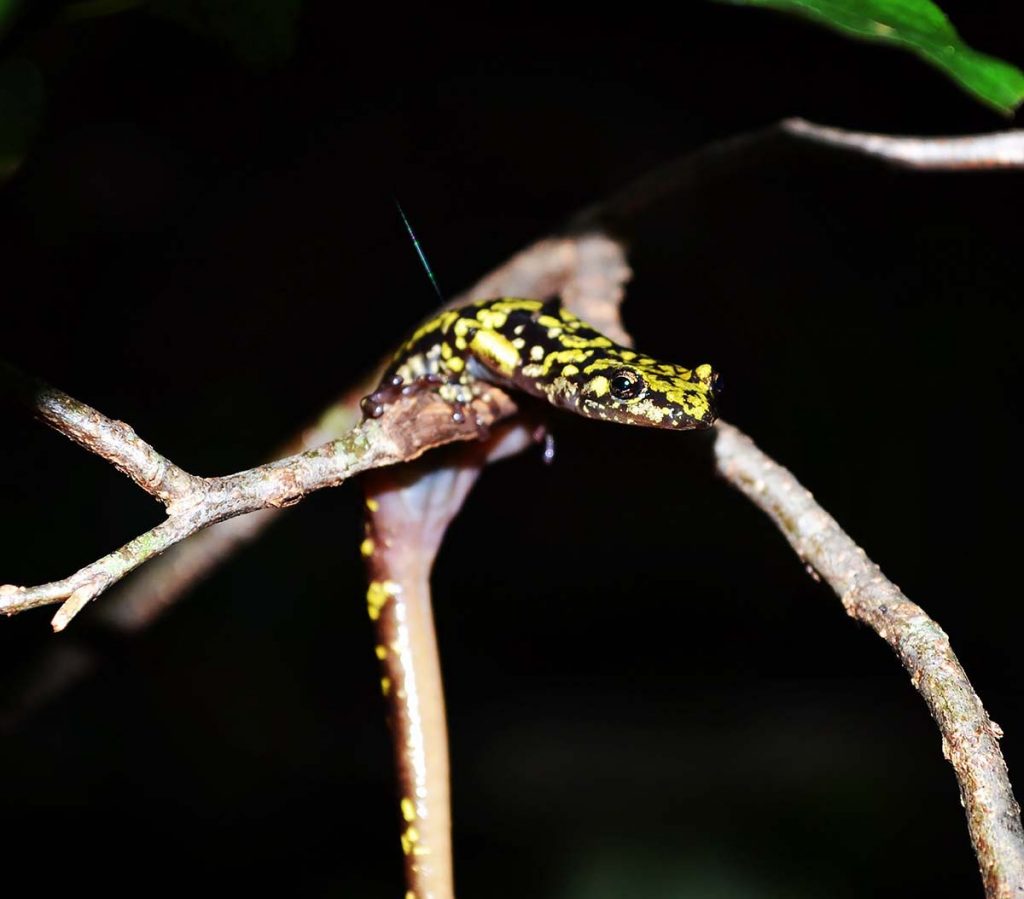Discovery of new species galvanizes scientists and conservationists

“The first time I saw the evidence that this was a different species, I was pretty shocked how strong it was,” says JJ Apodaca, lead scientist and founder at Tangled Bank Conservation in Asheville. Once he began thinking about it more, “it made perfect sense,” he told Bold Life in early March.
The dense biodiversity in the Southern Appalachians allows for unique varieties of species to be present, including in ecological oasis Hickory Nut Gorge, located in Henderson and Rutherford counties, where the new salamander was discovered. “We have more salamanders, snails, freshwater mollusks, and freshwater fish in the region than anywhere else in the world,” says Apodaca. (The discovery was shared nationally earlier this year, including via Garden & Gun Magazine out of Charleston, SC, in their article “Meet the South’s Newest Salamander.”)
The Hickory Nut Gorge Green Salamander (Aneides caryaensis) was found within the 400-acre Hickory Nut Gorge Teaching and Research Reserve (TARR), originally donated to Conserving Carolina in 2015 by the Community of the Transfiguration, an Episcopal order of nuns headquartered in Cincinnati who own property in Bat Cave. The preserve protects more than 12 distinct natural communities, 20 “rare/watchlist” plant and animal species, and almost four miles of streams, reports David Lee, natural-resource manager at Conserving Carolina.
The microlocal ambibian thrives inside long, deep, horizontally oriented rock crevices — so narrow that other species of adult salamanders can barely squeeze through. “One inside, the crevice opens slightly to provide enough room for the salamander to overwinter, reproduce, lay eggs, and rear their young,” says Lee.
Now that it’s summer, the surrounding vegetation of hardwood trees and understory shrubs “provides the crevice and surrounding area with a unique humidity, light, and temperature. The conditions of this microclimate are thought to be extremely important for the survival of the species.”
For more information on Conserving Carolina (847 Case St., Hendersonville), visit conservingcarolina.org or call 828-697-5777.
